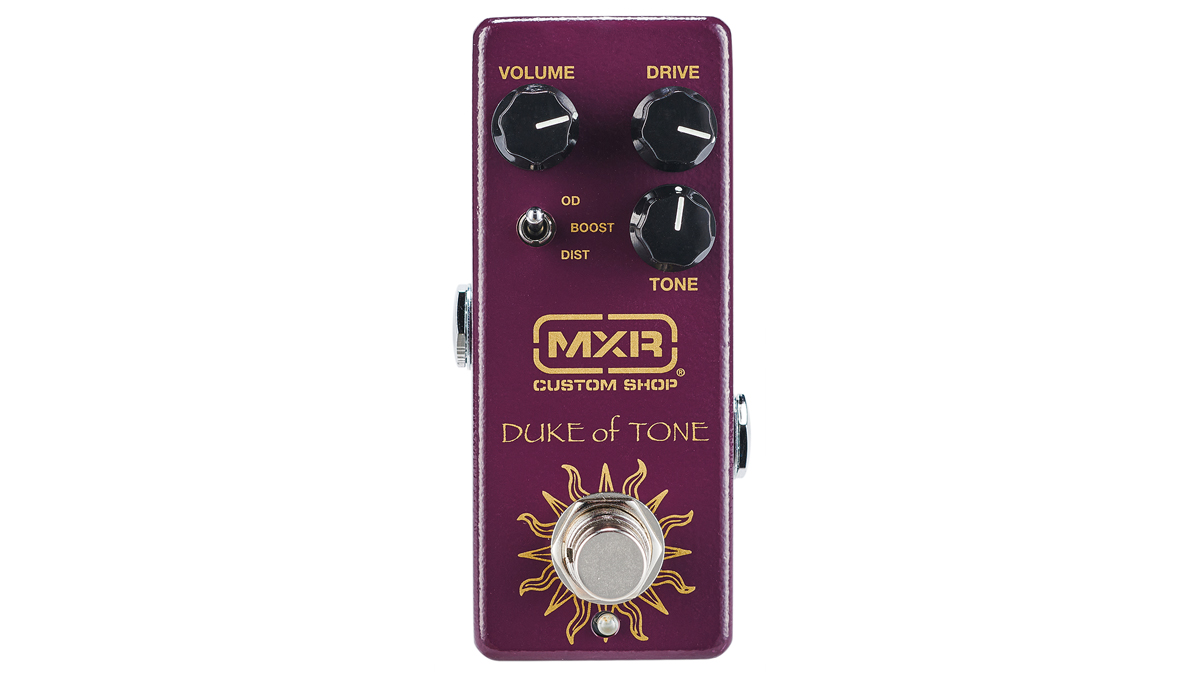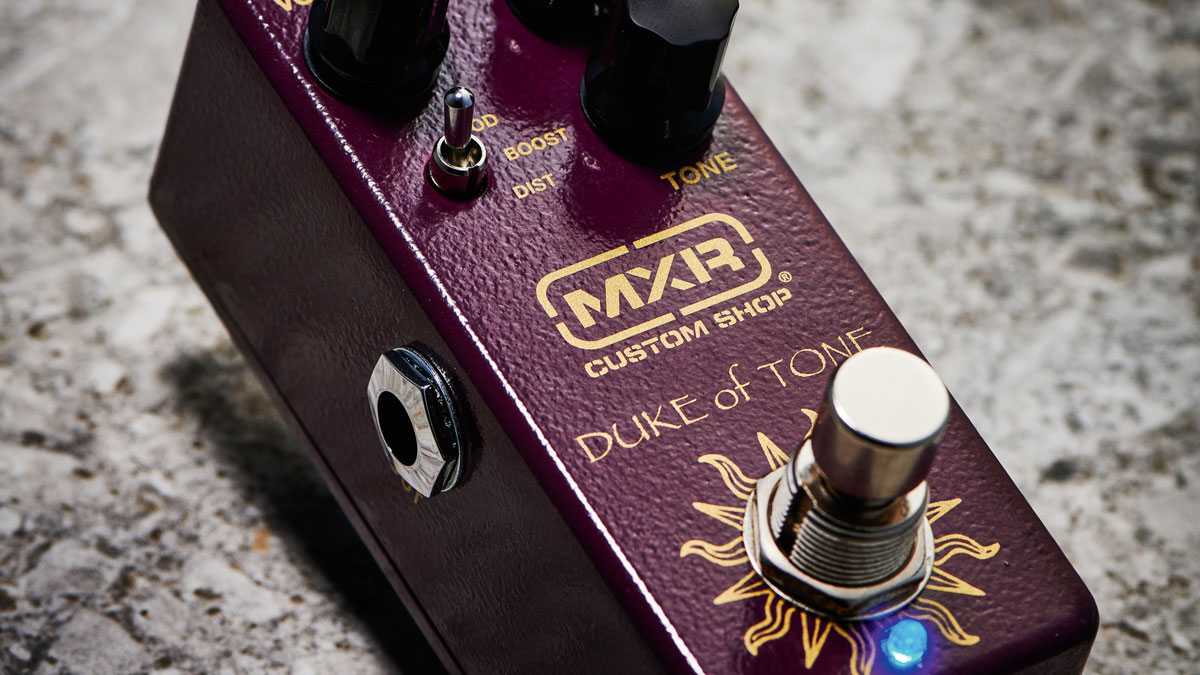Guitar World Verdict
What’s not to like about this pedal? Anyone wanting to buy into the whole King of Tone thing can now do so instantly. If you want a versatile and transparent boost or drive pedal that you can neatly slot into any setup, it’s no sweat with this particular Duke.
Pros
- +
King/Prince Of Tone sounds without the purchasing obstacles.
- +
Very compact size.
- +
Three instantly accessible modes.
- +
Decent build quality.
Cons
- -
Nothing… except the usual fat fingers/small knobs interactions of a pedal this size.
You can trust Guitar World
Ever since its introduction, the Analog Man King of Tone has been one of the most sought-after overdrive pedals on the market, so much so that if you want a new one you have to get on a waiting list – which, by some current estimates, is about five years long!
The King of Tone is a double-channel pedal based on heavily modded circuitry from the Marshall Bluesbreaker pedal, each channel having internal DIP switches for a choice of Overdrive, Clean and Distortion modes.
It also spawned a single-channel version, the Prince Of Tone, which has a top-panel switch for the modes. That pedal’s control surface is echoed in this new Duke Of Tone unit, which is an Analog Man collaboration with MXR, designed to give guitarists some of that King and Prince Of Tone mojo without having to get in line and queue.
The Boost mode is the equivalent of the King of Tone’s Clean mode and uses op-amp clipping rather than diodes. Here, unity gain with the Drive knob at minimum is around two o’clock, leaving some Volume knob travel for dialling in a clean boost.

This mode is great for taking a clean amp just that little bit further because the Drive knob adds grit around the edges, all with great touch sensitivity and an open transparency that lets your core guitar/amp tone breathe. It’s also really potent for stacking with other dirt pedals. There’s plenty of nuance to be dialled in with the knobs, but if you want some extra headroom then the Duke can be run at 18 volts.
We were able to match the two pedals up to a point where any perceived disparities were so subtle as to make no difference when playing. In short, it can do the job
OD mode utilises diode clipping and brings in a natural, airy low-level drive sound, while Distortion mode, with its harder clipping, takes things that little bit further with more compression going on.
The big question for many will be whether it sounds identical to a single King Of Tone channel, and from A/B tests with our own pedal we can say that, although it took slightly different knob positioning, we were able to match the two pedals up to a point where any perceived disparities were so subtle as to make no difference when playing. In short, it can do the job.
Specs
- PRICE: $149 / £179
- ORIGIN: USA
- TYPE: Drive pedal
- FEATURES: True bypass
- CONTROLS: Volume, Drive, Tone, OD/Boost/Dist switch, internal treble trimmer, Bypass footswitch
- CONNECTIONS: Standard input, standard output
- POWER: 9V DC adaptor (not supplied) 6mA but can be run safely at 18V
- DIMENSIONS: 40 (w) x 91 (d) x 55mm (h)
- CONTACT: Jim Dunlop
Trevor Curwen has played guitar for several decades – he's also mimed it on the UK's Top of the Pops. Much of his working life, though, has been spent behind the mixing desk, during which time he has built up a solid collection of the guitars, amps and pedals needed to cover just about any studio session. He writes pedal reviews for Guitarist and has contributed to Total Guitar, MusicRadar and Future Music among others.
“The original Jordan Boss Tone was probably used by four out of five garage bands in the late ’60s”: Unpacking the gnarly magic of the Jordan Boss Tone – an actual guitar plug-in that delivers Dan Auerbach-approved fuzz
“This is a powerhouse of a stompbox that manages to keep things simple while offering endless inspiration”: Strymon EC-1 Single Head dTape Echo pedal review












